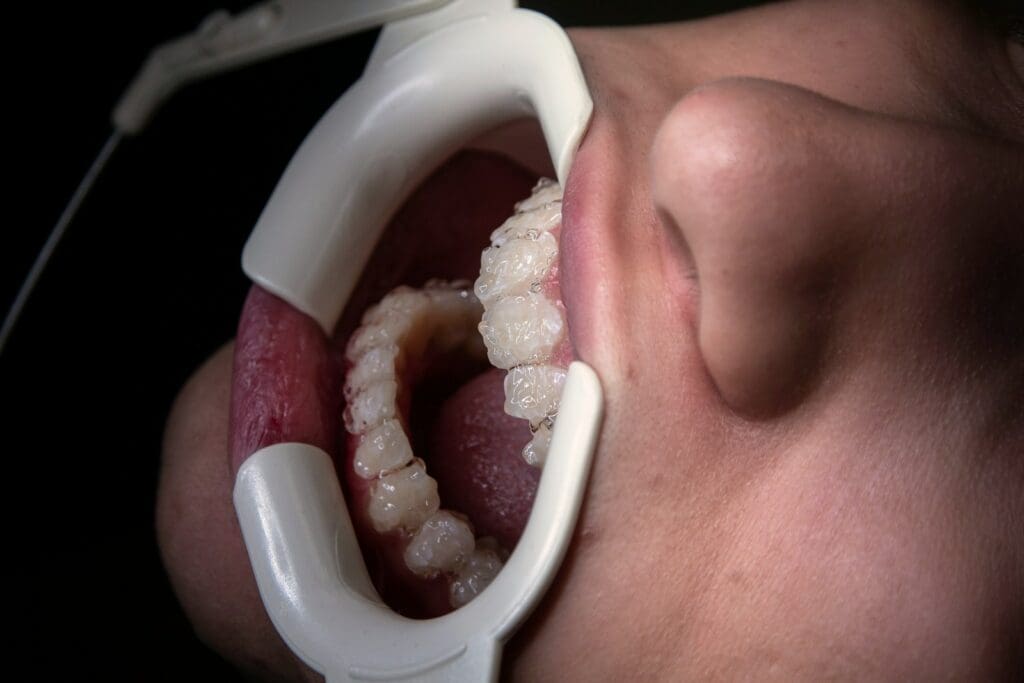
Unveiling Effective Techniques and Safety Considerations
Teeth whitening has become an increasingly popular cosmetic procedure for individuals seeking to enhance the aesthetic appeal of their smiles. With a range of options available, from over-the-counter products to professional treatments, understanding the nuances of each method is crucial for achieving the desired results while ensuring oral health safety. The effectiveness of teeth whitening varies depending on the technique employed, the extent of discoloration, and individual oral health conditions.
The pursuit of a brighter smile must also consider the safety and health implications associated with teeth whitening. Potential risks and side effects, such as tooth sensitivity and gum irritation, can accompany even the most commonly used whitening methods. It is, therefore, imperative for individuals to be well-informed about the products and procedures they choose to employ. This includes recognizing the importance of following manufacturer’s guidelines and seeking professional dental advice when necessary.
Results from teeth whitening are not uniform, as factors such as genetics and lifestyle choices—like diet and smoking habits—can influence the outcome. The efficacy of whitening treatments can be maximized through proper dental care and by setting realistic expectations based on one’s unique dental profile. Comprehensive insights into the diversity of whitening methods, alongside a clear understanding of their safety and the potential for achieving substantive results, empower individuals to make informed decisions that align with their personal oral health goals.
Fundamentals of Teeth Whitening
Before exploring teeth whitening methods, it’s crucial to understand why discoloration occurs and what substances are used to brighten teeth.
Causes of Tooth Discoloration
Tooth discoloration can arise from several factors:
- Extrinsic causes: These include staining from foods and beverages such as coffee, tea, and red wine, as well as tobacco use.
- Intrinsic causes: Discoloration may also be a result of medication side effects, aging, which leads to enamel thinning and revealing the darker dentin, or trauma to the teeth.
Overview of Whitening Agents
Common whitening agents include:
- Hydrogen peroxide: This is a potent oxidizing agent that penetrates the enamel to address intrinsic and extrinsic stains.
- Carbamide peroxide: When applied, it breaks down into hydrogen peroxide and urea, with a longer-lasting release that provides sustained whitening effects.
These agents can be found in various concentrations across different whitening products and professional treatments, influencing their efficacy and potential for sensitivity.
Professional Whitening Procedures
Professional whitening procedures, offered by licensed dentists, are known for their effectiveness and safety. They can often lead to more immediate and noticeable results than over-the-counter products.
In-Office Whitening Treatments
In-Office Whitening Treatments involve direct application of a potent bleaching agent onto the teeth by dental professionals. This process typically uses hydrogen peroxide or carbamide peroxide at higher concentrations than what is available for at-home use. The procedure generally lasts about an hour and includes the application of a protective gel or a rubber shield to guard the gums and oral tissues from the effects of the bleach. A specialized light or laser may be employed to activate the bleaching agent and enhance results.
- Average Treatment Time: Approximately 60 minutes
- Expected Results: 3-8 shades lighter, varies by individual
- Maintenance: As recommended by the dentist
Dentist-Supervised At-Home Kits
Dentist-Supervised At-Home Whitening Kits are a midway point between in-office treatments and over-the-counter options. These kits involve custom-fitted trays made by dentists specifically for a patient’s mouth. Individuals then apply a dentist-provided whitening gel into these trays and wear them for prescribed periods at home over a couple of weeks.
- Average Treatment Time: Varies, typically a few hours daily over two weeks
- Expected Results: Gradual whitening achieving up to 6 shades lighter
- Maintenance: Periodic treatments as advised by the dentist
These kits permit more gradual bleaching of the teeth and typically result in less sensitivity compared to in-office procedures. However, the individual’s discipline in following the prescribed routine determines the effectiveness of the treatment.
Over-the-Counter and DIY Whitening Options
Consumers have access to a variety of teeth whitening products that can be used at home. These options tend to be cost-effective and convenient, making them a popular choice for individuals seeking to brighten their smiles outside of a dental office.
Whitening Toothpastes and Rinses
Whitening toothpastes and rinses are formulated with mild abrasives and chemicals that aim to remove surface stains on the teeth. They often contain:
- Hydrogen peroxide or carbamide peroxide: which act as bleaching agents to lighten tooth color.
- Abrasives: such as silica, which gently polish the teeth.
Duration for visible results: Regular use of these products can lead to noticeable whitening after several weeks.
Home Whitening Strips and Gels
Home whitening strips and gels contain peroxides, similar to those found in toothpastes and rinses, but at higher concentrations. They are applied as follows:
- Strips: Thin, flexible pieces of plastic coated in whitening gel are placed onto the teeth’s surface.
- Gels: Applied directly to the teeth using a small brush or a pen-like applicator.
Frequency of application and duration of treatment can vary between products, with some requiring daily use for up to two weeks for full results. It is essential for users to follow the manufacturer’s instructions to minimize risks such as tooth sensitivity and gum irritation.
Safety and Risks of Teeth Whitening
When considering teeth whitening, it’s crucial to be aware of potential sensitivity issues and the importance of gum protection. Adhering to recommended best practices can help in minimizing risks associated with teeth whitening procedures.
Sensitivity and Gum Protection
Teeth whitening can lead to temporary tooth sensitivity. This occurs because whitening agents may penetrate the tooth enamel and irritate the nerve of the tooth. To reduce the likelihood of sensitivity, individuals should use peroxide-based whitening products cautiously and consider using toothpaste designed for sensitive teeth.
Gum protection is another critical aspect. Whitening agents can cause gum irritation or even damage if they come into contact with the gums for an extended period. Dentists often use a protective gel or a rubber shield to safeguard the gums during professional whitening treatments.
Best Practices for Minimizing Risks
To minimize the risks of teeth whitening:
- Consultation: Always consult with a dental professional before beginning any whitening regimen.
- Follow Instructions: Adhere strictly to product guidelines or professional instructions for application duration and frequency.
- Quality Products: Choose high-quality, reliable whitening products with safe levels of bleaching agents.
- Monitor Progress: Regularly monitor teeth and gum response to whitening, and discontinue use if adverse reactions occur.
By following these precautions, individuals can enhance the safety of their teeth whitening experience.
Efficacy and Outcomes of Whitening
Teeth whitening can provide significant aesthetic improvements to one’s smile. However, the effectiveness and duration of results can vary widely depending on the method used and individual factors.
Short-Term vs Long-Term Results
Most teeth whitening methods yield immediate, short-term results. Patients may see their teeth become several shades lighter within a few hours to a few days after treatment. For example, in-office bleaching procedures typically produce rapid and noticeable changes. Conversely, long-term outcomes depend on the continuation of maintenance protocols and lifestyle choices. Over-the-counter products, like whitening strips, may offer prolonged results if used consistently over time as advised.
Factors Influencing Whitening Effectiveness
Tooth Composition and Initial Shade: Teeth with yellow tones typically respond better to whitening treatments than those with grayish hues.
Whitening Method: Professional treatments often use stronger bleaching agents and can be more effective than at-home kits. Bleaching concentration and light assistance in treatments can also impact effectiveness.
Lifestyle Habits: Consumption of staining substances (like coffee, tea, and tobacco) can reduce the longevity of whitening results.
Adherence to Instructions: Following the product’s protocol precisely is crucial for both safety and maximizing outcomes.
Oral Health: Preexisting dental conditions, such as gum disease or significant tooth decay, can affect whitening results and may require prior treatment.
Each of these factors must be considered to set realistic expectations for teeth whitening efficacy and outcomes.
Maintaining Whitening Results
Achieving a bright smile is only part of the journey; maintaining teeth whitening results requires diligent care and specific routines. It’s essential for one to adopt practices that prevent discoloration and support oral health.
Daily Oral Hygiene
Good oral hygiene is crucial for maintaining teeth whitening results. Individuals should brush twice a day with a fluoride toothpaste and floss regularly to remove plaque and prevent staining. Using a whitening toothpaste can aid in removing surface stains. Furthermore, incorporating an antiseptic mouthwash can help to keep teeth surfaces clean and reduce the likelihood of stain accumulation.
Regular Dental Check-Ups
Dental check-ups play a significant role in sustaining the effects of teeth whitening. Dentists recommend scheduling visits every six months to remove tartar buildup, a potential cause for discoloration. During these visits, one may also receive professional advice tailored to their unique dental needs, ensuring that their whitening results last as long as possible.



